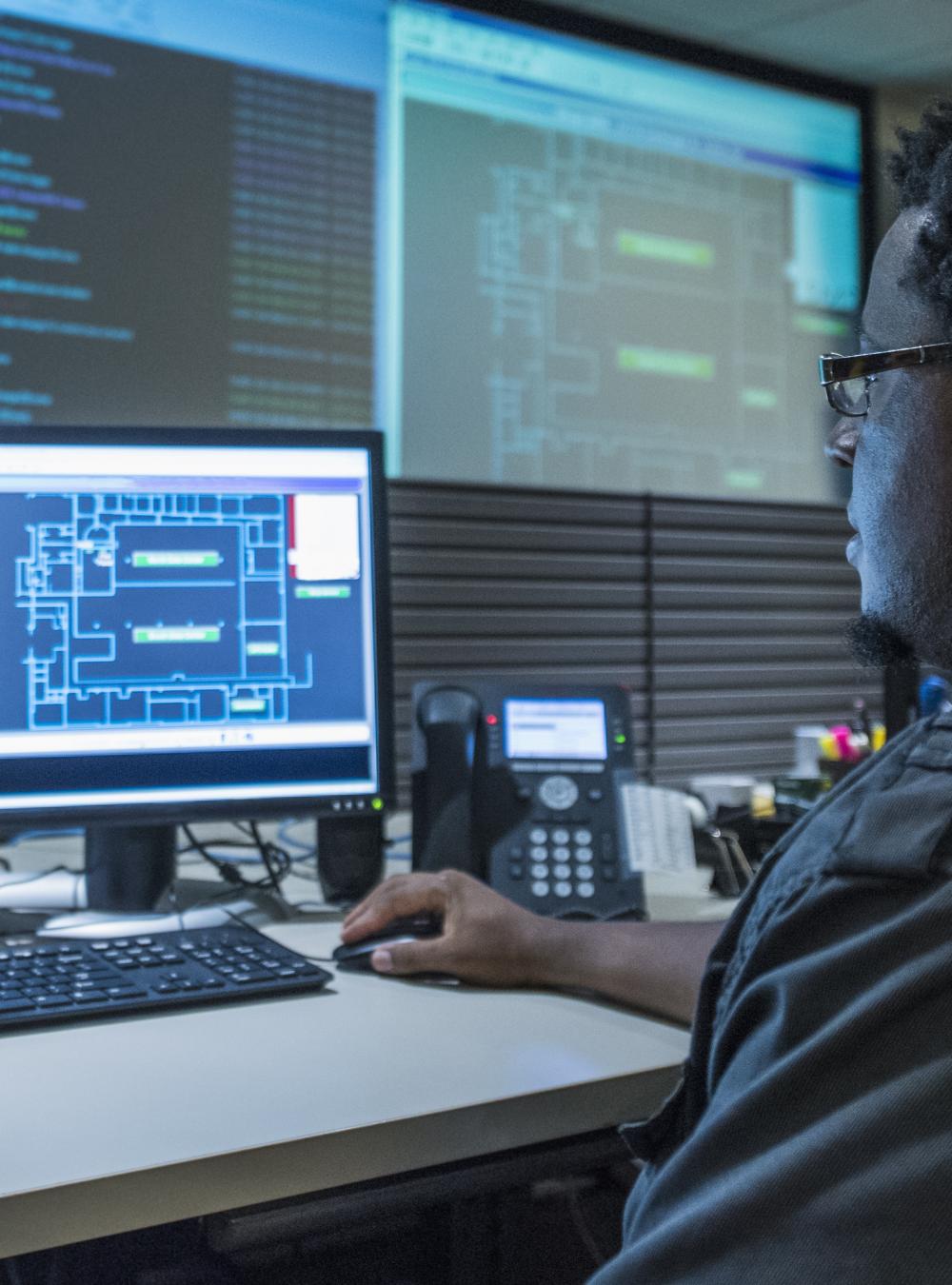Government information technology modernization is at a tipping point. MITRE connects key stakeholders across agencies to help them improve systems—and better serve the public, during crises and the routine.

Will Federal IT Be Ready for the Next Crisis—and the Next Normal?
When the discovery of a crack in a steel beam forced the indefinite closure of the Hernando de Soto Bridge in Tennessee—a thoroughfare for 35,000+ vehicles a day—officials deemed it “a catastrophic event.” One that demonstrated the dangerous effects of decaying national infrastructure.
Like a bridge, federal information technology connects the public to critical national resources. The pandemic spotlighted another sort of “crack”—underscoring the vulnerability of our IT systems. As millions of Americans sought assistance, systems to deliver stimulus money, unemployment aid, and relief to small businesses frequently crashed, leaving people floundering.
Beyond crisis relief, the public depends on federal IT systems to access a wide array of every-day services, including Social Security payments, healthcare, and veterans’ benefits.
IT modernization efforts are hardly new. And various agencies and cross-agency programs have made some advances over the past decade. But COVID-19 provided an unprecedented impetus for greater progress.
To help drive this, MITRE brings together policy makers and administration leaders from across the government to explore how we can accelerate digital transformation.
“Federal IT is a topic on which much has been done from a legislative, policy, and practice standpoint,” says Jim Cook, MITRE vice president for strategic engagement and partnerships and executive chair of our Center for Data-Driven Policy.
“However, the pace of change lags behind the growth of technology, the increasing threats and risks to technology-dependent infrastructure, and the expectations of functional business owners and the public.”
Cook adds, “It’s critical now more than ever that all the key players—Congress, the Administration, chief information officers, and their private sector partners—work closely together to align policy, priorities, and programs.”
Shifting the Status Quo
At a recent Future of Federal IT forum, MITRE convened key stakeholders from the legislative and executive branches, as well as some with industry experience. The focus? Strategically addressing the persisting problems around IT modernization—and then accelerating solutions.
Representative Gerry Connolly (D-VA), chairman, House Subcommittee on Government Operations, said, “This past year has been challenging for all of us but also served as an opportunity to remind the country how much we depend on the federal government and the federal workforce in a time of crisis.”
Throughout his 13 years in Congress, Connolly has worked to improve the federal IT posture through pivotal legislation. Among them are the Federal Information Technology Acquisition Reform Act, or FITARA, and the Federal Risk and Authorization Management Program, a.k.a. FedRAMP.
Moving forward, the Congressman emphasized the need to retire legacy systems, update systems to 21st century standards, and ensure robust cybersecurity.
“We cannot and should not be satisfied with the status quo,” Connolly said.
Scaling Up to Meet Demand, Prioritizing Equity Across Agencies
Beyond legislation, agencies are dedicating significant energy to modernization. For example, the Office of Management and Budget’s Technology Modernization Board scaled up to meet a recent government-wide surge in IT project requests.
The board evaluates proposals for funding that includes $1 billion allocated for cybersecurity and digital services upgrades, under the American Rescue Plan.
Deputy Federal Chief Information Officer Maria Roat said, “…We're seeing large-scale modernization cybersecurity projects that require multi-year and sustained continuous investments.
“I'm really excited by the number of projects and the ability to…address those security gaps and improve the public's ability to access government services.”
Additionally, the General Services Administration’s Technology Transformation Services (TTS) oversees numerous programs working to re-envision federal IT. Among these: the $150 million Federal Citizen Services Fund, to enhance how the government operates sites such as digital.gov, usa.gov, and vote.gov.
TTS also explores investment ideas—potentially reusable across government—around equity and diversity. These range from a digital civil rights portal, to helping those leaving incarceration learn about available services, to improving access for people underrepresented in the electoral process.
TTS director Dave Zvenyach emphasizes a priority on “…making sure that we're doing everything that we can to promote equity and accessibility throughout all of our products…and helping our agency partners do the same.”
To meet the challenges ahead, MITRE will continue to draw on our cross-government experience, offering objective, evidence-based insights as we connect policy makers, influencers, and implementers. It’s not about simply repairing the cracks, but about making true headway for the future of federal IT.